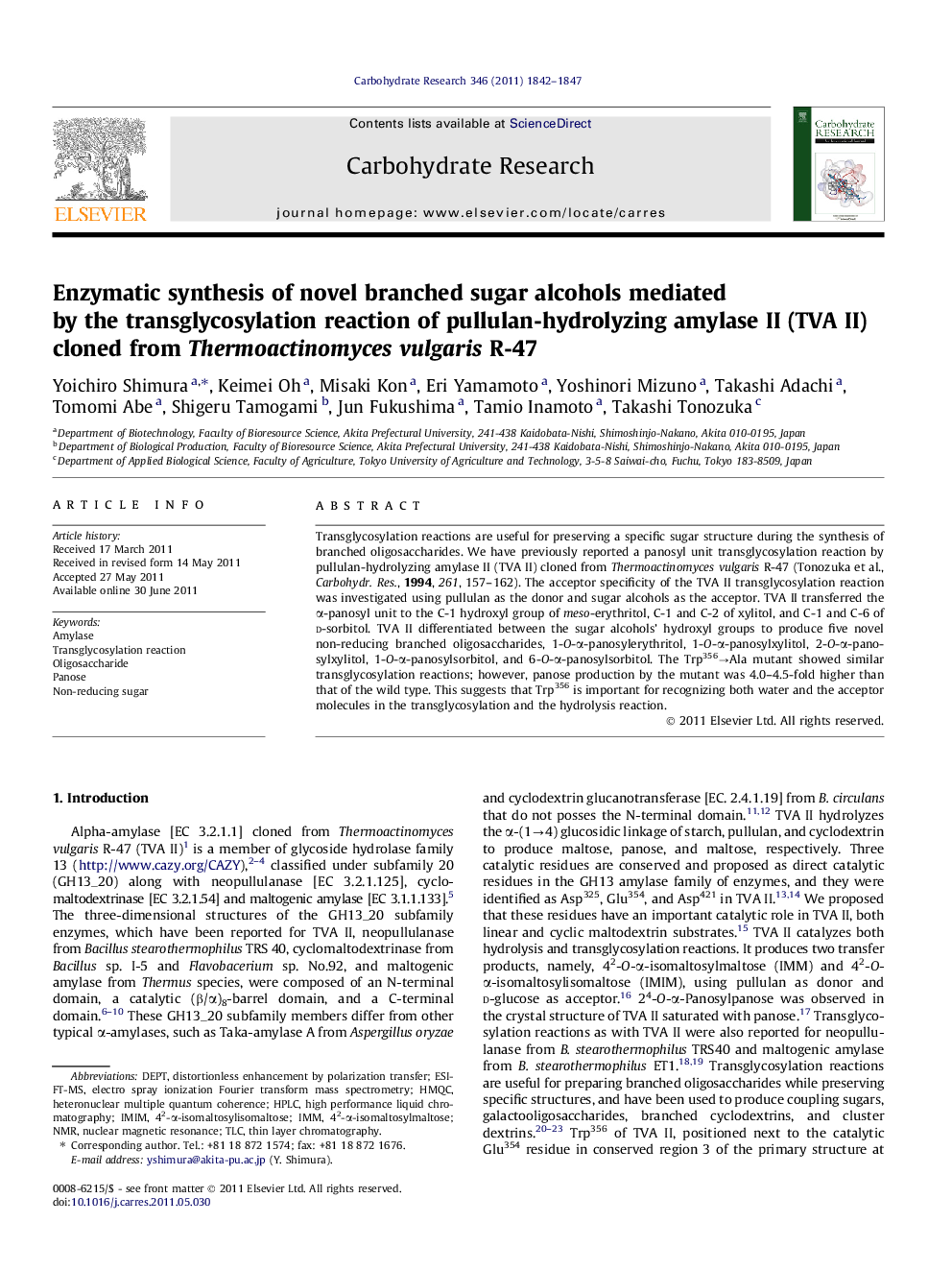| Article ID | Journal | Published Year | Pages | File Type |
|---|---|---|---|---|
| 10606584 | Carbohydrate Research | 2011 | 6 Pages |
Abstract
Transglycosylation reactions are useful for preserving a specific sugar structure during the synthesis of branched oligosaccharides. We have previously reported a panosyl unit transglycosylation reaction by pullulan-hydrolyzing amylase II (TVA II) cloned from Thermoactinomyces vulgaris R-47 (Tonozuka et al., Carbohydr. Res., 1994, 261, 157-162). The acceptor specificity of the TVA II transglycosylation reaction was investigated using pullulan as the donor and sugar alcohols as the acceptor. TVA II transferred the α-panosyl unit to the C-1 hydroxyl group of meso-erythritol, C-1 and C-2 of xylitol, and C-1 and C-6 of d-sorbitol. TVA II differentiated between the sugar alcohols' hydroxyl groups to produce five novel non-reducing branched oligosaccharides, 1-O-α-panosylerythritol, 1-O-α-panosylxylitol, 2-O-α-panosylxylitol, 1-O-α-panosylsorbitol, and 6-O-α-panosylsorbitol. The Trp356âAla mutant showed similar transglycosylation reactions; however, panose production by the mutant was 4.0-4.5-fold higher than that of the wild type. This suggests that Trp356 is important for recognizing both water and the acceptor molecules in the transglycosylation and the hydrolysis reaction.
Keywords
Related Topics
Physical Sciences and Engineering
Chemistry
Organic Chemistry
Authors
Yoichiro Shimura, Keimei Oh, Misaki Kon, Eri Yamamoto, Yoshinori Mizuno, Takashi Adachi, Tomomi Abe, Shigeru Tamogami, Jun Fukushima, Tamio Inamoto, Takashi Tonozuka,
